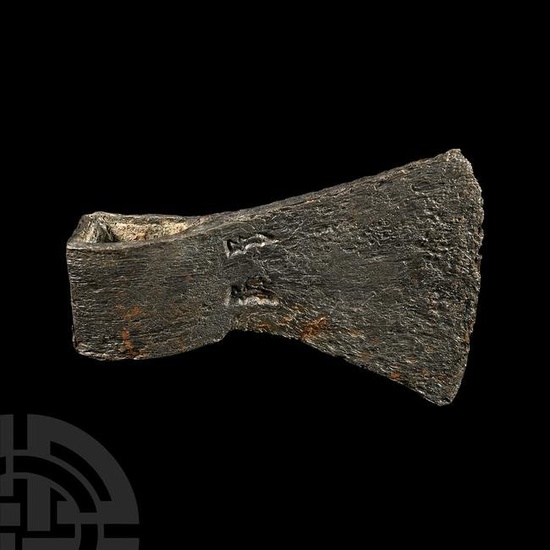Medieval Iron Axehead
14th-15th century A.D. Composed of a sub-triangular-section socket, stamped to one cheek. See Glosek, M., Pó?no?redniowieczna bro? obuchowa w zbiorach polskich (Late medieval blunt weapons in Polish collections), Warszawa-?ód?, 1996, pl.XXX, letterr B, for a similar axehead.349 grams, 13.6 cm (5 3/8 in.). Acquired 1990s-early 2000s. East Anglian private collection. This type of axehead, with similar specimens found in the territories of the Teutonic Order, was by far the most popular form of axe which remains unchangeable and continues to be used in the Baltic to this day. It appears in East European territories as early as the mid 13th century A.D. [No Reserve]
View it on
Sale price
Estimate
Reserve
Time, Location
Auction House
14th-15th century A.D. Composed of a sub-triangular-section socket, stamped to one cheek. See Glosek, M., Pó?no?redniowieczna bro? obuchowa w zbiorach polskich (Late medieval blunt weapons in Polish collections), Warszawa-?ód?, 1996, pl.XXX, letterr B, for a similar axehead.349 grams, 13.6 cm (5 3/8 in.). Acquired 1990s-early 2000s. East Anglian private collection. This type of axehead, with similar specimens found in the territories of the Teutonic Order, was by far the most popular form of axe which remains unchangeable and continues to be used in the Baltic to this day. It appears in East European territories as early as the mid 13th century A.D. [No Reserve]



